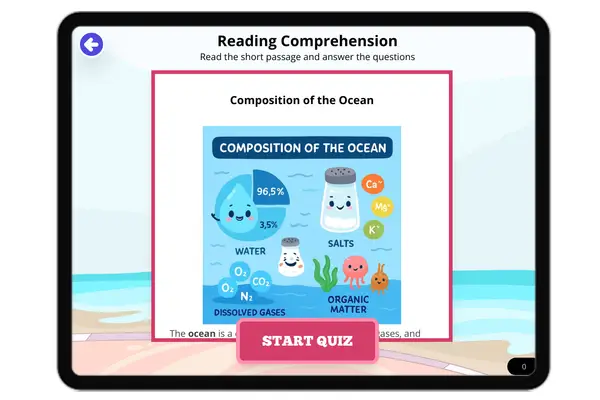What is Deforestation? — Passage
Deforestation is the large-scale removal of forests, primarily caused by human activities such as logging, agriculture, mining, and urbanization. Forests are vital ecosystems that support biodiversity, regulate climate, and provide resources like timber, food, and medicine. However, deforestation disrupts these functions, leading to severe environmental and social consequences.

The major reasons for deforestation include:
- Agriculture: Forests are cleared to create farmland for crops and livestock.
- Logging: Trees are cut down for timber and paper production.
- Urbanization: Forests are replaced by cities and infrastructure.
Mining: Forests are destroyed to extract minerals and fossil fuels.
Deforestation has far-reaching impacts on ecosystems and the planet. It contributes to climate change by releasing stored carbon dioxide into the atmosphere, reduces biodiversity by destroying habitats, and disrupts water cycles, leading to soil erosion and desertification. Additionally, deforestation affects indigenous communities that rely on forests for their livelihoods.
Efforts to combat deforestation include reforestation, sustainable logging practices, and conservation programs. Protecting forests is essential for maintaining biodiversity, regulating the Earth’s climate, and ensuring the survival of countless species, including humans.
Fun fact: Forests are home to more than 80% of the world’s terrestrial biodiversity!
What is deforestation?
Planting more treesLarge-scale removal of forestsBuilding cities in desertsCreating artificial ecosystemsWhat is one major cause of deforestation?
ReforestationAgricultureConservation programsSustainable loggingHow does deforestation contribute to climate change?
By absorbing carbon dioxideBy releasing stored carbon dioxide into the atmosphereBy reducing soil erosionBy increasing biodiversityWhat is one impact of deforestation on water cycles?
It improves water qualityIt disrupts water cycles, leading to soil erosionIt increases rainfallIt has no effect on water cyclesWhat is one way to combat deforestation?
Increasing logging activitiesReforestation and sustainable logging practicesExpanding urban areasIgnoring the problemWhat percentage of the world’s terrestrial biodiversity lives in forests?
20%50%80%100%What is one consequence of deforestation for indigenous communities?
Improved livelihoodsLoss of resources and livelihoodsIncreased biodiversityBetter climate regulationWhat is the fun fact about forests mentioned in the passage?
Forests are not important for biodiversityForests are home to more than 80% of the world’s terrestrial biodiversityForests have no role in climate regulationForests are only found in deserts


















